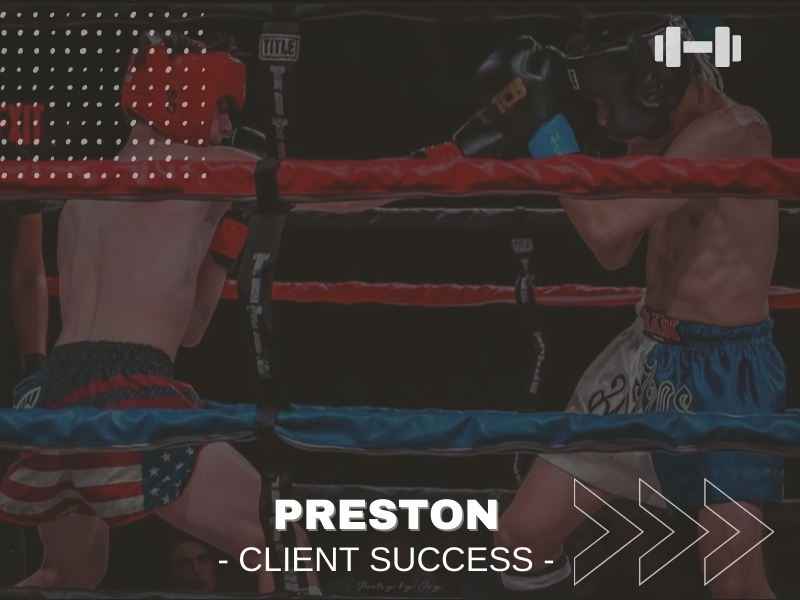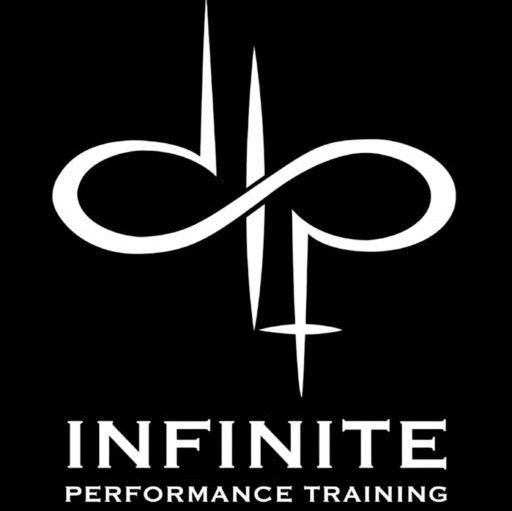Youth athlete training Gainesville VA – what should know and how do you find the best personal trainer near you? Let us help!
Hiring a personal trainer just for “motivation” is like drafting an NBA star just to rebound—you’re missing the real game. True athletic growth and overall health come from targeted training sessions that push endurance, sharpen physical fitness, and build skills with precision, all while promoting healthy weight management. Just ask athletes who’ve leveled up through structured personal training instead of random workouts. Think of it as upgrading from backyard basketball to playing under championship lights.
Keep reading to see how the right personal trainer can take young people from fundamentals to peak performance and optimal health, without wasting a single rep.
Why Is Youth Athlete Training and Health Important?
Raw talent might win a game or two, but structured training and a focus on overall health are what build lasting success. Youth athlete training develops the foundation that young people carry into every sport, season, and competitive stage. With the right coaching experience, athletes gain more than speed and strength—they gain the discipline, knowledge, and habits that set them apart, contributing to a healthier lifestyle and effective weight management.
This kind of preparation combines personal training services with focused skills training, so athletes improve on both physical and technical levels. It’s where learning proper dribbling mechanics can be just as important as understanding how a balanced diet fuels energy and recovery, and supports a healthy weight. The benefits are as much about confidence and well-being as they are about performance.
Key reasons youth athlete training and health matters:
- Builds Strong Fundamentals. Athletes master movement patterns, coordination, and sport-specific basics early, setting a foundation for lifelong health.
- Develops Technical Skills. Focused skills training sharpens abilities like dribbling, passing, and controlled movement, enhancing physical literacy.
- Teaches Smart Nutrition and Weight Management. A well-planned diet supports energy levels, muscle recovery, long-term health, and helps maintain a healthy weight.
- Improves Mindset and Game IQ. Training fosters decision-making, strategy, and the ability to adapt under pressure, contributing to mental well-being.
- Creates Lasting Habits. Discipline in practice and preparation carries into academics and everyday life, promoting a healthy lifestyle.
What Are the Physical and Mental Benefits of Youth Sports Training and Health Programs?
Introducing young athletes to structured conditioning, skill work, and health education cultivates multiple advantages:
- Improved motor coordination through repetitive drills that refine balance and agility.
- Enhanced bone density and muscle strength via supervised resistance exercises, supporting healthy growth.
- Increased self-confidence from measurable progress and supportive coaching feedback, boosting mental health.
- Better stress management through teamwork, goal setting, and positive reinforcement.
- Higher academic focus as regular physical activity boosts concentration and executive function.
- Support for healthy weight management through increased metabolism and balanced eating habits.
These holistic gains lay the groundwork for advanced training elements that elevate performance and promote lifelong well-being.
Benefits of Youth Sports Training for Health and Weight Management

Studies show that overuse injuries account for nearly 50% of all sports injuries in young athletes, yet most are preventable with the right preparation. Injury prevention is more than avoiding bad luck on the field—it’s about creating strong, balanced, and well-prepared bodies that can handle the demands of sport and maintain a healthy weight.
A complete program addresses every stage of preparation. Proper warm-up routines prime muscles and joints for movement, while strength balance exercises correct weaknesses that could lead to strain. Recovery techniques, including mobility work and active rest, keep tissue resilience high and joints stable.
Key elements of an effective injury prevention and health plan:
- Dynamic Warm-Ups – Increase blood flow, improve flexibility, and activate sport-specific muscles.
- Strength Balance Work – Target underused muscle groups to support joint stability and movement control.
- Recovery Practices – Incorporate stretching, hydration, and rest days to allow full tissue repair.
- Load Management – Adjust training volume to match the athlete’s age, growth stage, and workload.
- Nutritional Guidance – Educate on balanced meals and snacks to fuel performance and support healthy weight.
Research by Myer, G. D., et al., Sport Health (2011) confirms that structured training programs significantly reduce injury risk while improving performance and promoting healthier lifestyles. With consistent injury prevention and health habits, athletes can train year-round, progress steadily, and smoothly transition into advanced performance development.
GET IN TOUCH
Schedule a Training Session
How Does Training Prevent Injuries and Promote Health in Young Athletes?
Proper training integrates warm-up, strength balance, and recovery protocols to reduce injury risk by improving tissue resilience and joint stability, while also fostering overall health and supporting healthy weight management.
| Entity | Attribute | Value |
|---|---|---|
| Dynamic Warm-Up | Purpose | Increases muscle temperature and joint lubrication |
| Strength Balance Drills | Mechanism | Targets opposing muscle groups to correct imbalances |
| Progressive Overload | Benefit | Builds structural integrity in bones, tendons, and ligaments |
| Recovery Techniques | Outcome | Enhances tissue repair and reduces cumulative fatigue |
| Nutritional Education | Impact | Supports energy, recovery, and healthy weight maintenance |
When Should Youth Athletes Start Structured Training for Health and Performance?
Beginning structured athletic training and health education around ages 8–12 leverages key neurological and musculoskeletal development windows. Introducing age-appropriate speed, strength, coordination, and nutritional awareness during elementary and middle school years instills proper movement patterns, resilience, and healthy habits before growth spurts accelerate.
What Are the Key Components of Youth Athlete Training and Health Programs?
Did you know that youth athletes who participate in structured, multi-skill training and health education can improve overall performance and well-being by up to 30% compared to those in unstructured programs? That’s the power of combining science with purposeful coaching.
Youth training isn’t a random mix of drills; it’s a progressive system designed to build athletic potential and healthy habits step by step. Speed and agility drills enhance quickness and reaction time, while strength and conditioning sessions develop power, stability, and resilience. Sport-specific skill work sharpens the techniques that matter most in competition, from precision footwork to tactical decision-making. Nutritional guidance is integrated to support these efforts and promote a healthy weight.
Each element is layered within a long-term development framework, ensuring that fundamentals are mastered before moving into advanced training. This approach not only maximizes performance but also builds confidence, reduces injury risk, and prepares young athletes to excel in every stage of their sporting journey and maintain a healthy lifestyle.
How Does Speed and Agility Training Improve Athletic Performance and Health?
Speed and agility sessions refine neuromuscular coordination by practicing acceleration, deceleration, and directional changes. These drills teach young athletes to generate force quickly and adapt to game-like movements, directly boosting on-field reaction time and efficiency, while also contributing to calorie expenditure for weight management.
What Strength and Conditioning Exercises Are Safe and Beneficial for Youth Health?
Safe, growth-friendly conditioning focuses on bodyweight and light resistance activities that also support healthy weight management:
- Squats and lunges to reinforce hip and knee stability.
- Push-ups and inverted rows for balanced upper body strength.
- Planks and dead bugs to develop core control and posture.
- Medicine ball throws to introduce dynamic power safely.
Prioritizing form and gradual progression ensures effective strength gains without undue stress on growing structures, while also increasing metabolic rate.
How Is Sport-Specific Training Tailored for Different Youth Sports and Health Goals?
Sport-specific training aligns drills to game-relevant skills and positions by modifying movement patterns, intensity, and equipment, while also considering individual health and weight management goals.
| Sport | Key Focus | Sample Drill |
|---|---|---|
| Basketball | Change-of-direction | Cone zigzag sprints with defensive slides |
| Football | Explosive first step | Ladder quick-feet into resisted sled push |
| Soccer | Ball control & speed | Dribble-through-gate sprints with deceleration |
| Track & Field | Acceleration phase | Falling-start 20-meter sprints |
Customizing exercises by sport builds targeted competencies that feed into overall athleticism, peak performance strategies, and healthy weight management.
GET IN TOUCH
Schedule a Training Session
How Does Mental Performance Coaching Enhance Youth Athlete Development and Overall Health?

Mental performance coaching combines confidence building, focus training, and pressure management to sharpen psychological readiness alongside physical skills and promote a positive relationship with health and exercise.
What Techniques Build Confidence and Focus in Young Athletes for Health and Performance?
Confidence and focus techniques center on goal-setting, positive self-talk, and routine establishment:
- Setting incremental performance goals to illustrate progress in training and health habits.
- Replacing negative thoughts with affirmations that reinforce competence and self-efficacy.
- Using pre-practice rituals to create a consistent mental state for training and daily life.
These strategies forge a growth mindset that sustains improvement and resilience, contributing to both athletic success and overall well-being.
How Can Visualization and Pressure Handling Improve Competition Results and Health Outcomes?
Visualization trains neural pathways by mentally rehearsing successful performance scenarios, while pressure handling exercises—such as simulated high-stakes drills—familiarize athletes with stress responses. Together they reduce anxiety, sharpen decision-making under duress, and translate practice confidence into competition outcomes, fostering a resilient mindset that benefits all aspects of life, including health.
How Do Local Coaches In Gainesville, VA, Customize Training for Individual Athletes’ Health and Performance?
What if the difference between average results and breakthrough performance came down to how well your training fits you, including your health and weight management goals?
Customization begins with a detailed look at the athlete’s starting point. Coaches assess movement patterns to spot inefficiencies, evaluate strength levels to identify imbalances, and review mental skills to understand focus and resilience. From there, a tailored plan is built—not just for the sport, but for the individual’s overall health and fitness.
The process doesn’t stop once training begins. Progress is tracked through measurable benchmarks, and feedback loops ensure adjustments are made as the athlete grows, adapts, and takes on new challenges. By aligning every phase of the program with growth stage, sport-specific demands, performance goals, and health objectives, each athlete receives the right training at the right time, setting the stage for steady and sustainable improvement.
How Can Parents Choose the Right Youth Athlete Training and Health Program in Gainesville VA?

A parent once told me about her son who joined a flashy training camp promising “elite results in 30 days.” The sessions were intense, but there was no progression, no safety focus, and no adaptation to his age or skill level. Within weeks, the boy was burned out and nursing an avoidable injury, with no consideration for his overall health or weight management.
The takeaways from that experience are clear:
- Safety and Health come first – Programs should have proper warm-ups, injury prevention protocols, nutritional guidance, and trained staff focused on holistic well-being.
- Development over hype – True growth comes from steady, progressive training and health education, not quick-fix promises.
- Long-term support matters – A program should plan for years of development, not just a single season, fostering lifelong healthy habits.
When choosing a youth athlete training program, parents should look for a developmental philosophy that balances skill growth, physical conditioning, mental resilience, and injury prevention. The right program will not only improve performance now but also build the foundation for a healthy and successful athletic future, including effective weight management strategies.
What Safety and Development Factors Should Parents Consider for Youth Health?
Parents should verify:
- Certified coach credentials and child-safety clearances.
- Structured warm-up and cooldown routines that protect growing bodies.
- Age-appropriate progression models that align with LTAD (Long-Term Athlete Development) principles.
- Injury-prevention emphasis, including recovery guidelines and nutritional advice.
- A focus on building healthy habits and supporting healthy weight management.
Ensuring these factors foster a training environment where young athletes thrive safely and sustainably, developing a positive relationship with their health and bodies.
GET IN TOUCH
Schedule a Training Session
How Does Holistic Training Support Long-Term Youth Athlete Development and Health?
Winning games is easy; building an athlete who thrives for years is the real challenge. Holistic training focuses on the complete athlete—not just the scoreboard. It blends physical conditioning, mental performance coaching, sport-specific skills, nutritional education, and recovery into a single, integrated approach that supports healthy weight management.
On the positive side, this method ensures athletes develop movement fundamentals, refine sport techniques, and build mental resilience while learning rest strategies that prevent burnout. It also promotes steady progress through each stage of long-term athlete development, reducing the risk of injuries and fostering consistency. This comprehensive approach is crucial for maintaining a healthy weight and overall well-being.
The trade-off?
Holistic programs demand patience and commitment. Results may take longer to show compared to short-term, high-intensity methods, and they require more resources—qualified coaches, tailored plans, and structured follow-up. However, the long-term benefits for health, performance, and weight management are substantial.
When done well, holistic training lays the groundwork for athletes to progress from early development to competitive excellence with balanced physical, mental, and emotional growth. It’s an investment that prioritizes lasting performance and lifelong health over temporary wins.
The Verdict –
Real progress comes from a program built with purpose, precision, and a clear path forward, focusing on both athletic achievement and overall health. If you want your young athlete to rise above the noise and train with intention, contact us today.
We’ll help them develop the skills, mindset, consistency, and healthy habits that keep them performing at their best season after season, while supporting their overall health and weight management goals.
If you live in or near Gainesville, VA we can help you get the transformation and results you want!


 Group Training in Manassas: 5 Reasons It Works Better Than Solo Workouts
Group Training in Manassas: 5 Reasons It Works Better Than Solo Workouts
Leave a Reply